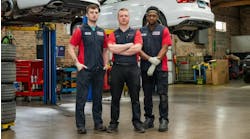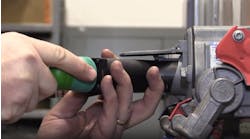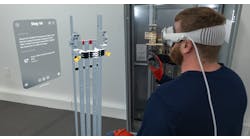How on earth do you really measure your technicians’ productivity? After all, there is much more to their jobs than PM and repair work.
If you could be a fly on the wall and watch what they are doing from clock-in to clock-out, and observe why they are doing it, here are some things you would certainly find.
- Directly related to the job at hand:
+ Working or direct troubleshooting, inspection, road testing.
+ Filling out paperwork, work orders.
+ Getting jobs (discussions with service writer or supervisor).
+ Walking around the shop transporting parts, tools, looking for things.
+ Waiting for spare parts, looking up the spares needed, waiting for someone to finish using a tool.
+ Waiting for a helper, waiting for a vehicle to be driven in, waiting for a delivery.
- Maybe related to the job at hand:
+ Idle time.
- Probably not related to the job at hand:
+ Breaks and lunch (if paid).
+ Late starts (it takes a while to get going in the morning), early quits at the end of a shift.
+ Excess personal time (after breaks and lunch).
+ Social time (time spent visiting, not covered elsewhere).
The reason technicians are doing what they are doing is important. Perhaps a technician is waiting a long time for the parts person to get off the phone with accounting or a vendor. Maybe the technician is shooting the breeze with his buddy on the way to the parts room. Perchance the technician is shooting the breeze with his buddy while waiting for the parts clerk.
The first instance is system-imposed time. The second is personal time. The third is system-imposed time for the guy waiting at the window.
ACCURATE METHOD
The best method for discovering the reason why technicians do what they do is the Work Sampling System. A method developed in the 1940s, it is based on random snapshot observations over a period of time which can accurately, and confidently, model the reality of a shop.
Work Sampling System takes a small fraction of the time and effort. Simply described, you (anyone) walk around the shop and instantly note what everyone is doing. Each walk around is called a tour. Tours are initiated at random times throughout the work day.
Amazingly, in a moderate number of tours - depending on how many people you observe and a few other factors, you can accurately model your shop.
Years ago, I was giving a three-day training session on fleet maintenance to an audience of shop managers and support staff at a large municipal garage. The training room was located in a mezzanine that overlooked the repair and PM bays. The shop could be viewed when the curtains on the room’s glass windows were pulled open.
I said to the class that we could start a study of productivity here and now by observing what the technicians in the shop were doing. Everyone was excited. The shop manager shop boasted productivity would be better than 70 percent.
The first time we opened the curtain there was no one working in any of the 10 bays. The shop manager jumped up and said he would fix that problem. I told him to sit tight. Right now we are not solving the problems because we don’t yet know what the actual problems are or even how bad they are.
Over the course of the training, the most people we ever found working in the bays were two. We couldn’t see the other areas (fueling, wash bay, body shop, yard and road testing), so we could not do a formal study from our vantage point alone. If we were doing a formal study, we’d have to tour the other areas to see as many people as we could.
KEY QUESTION
The important question to answer is: If technicians are not working, what are they doing? The answer to this question will supply detailed information about things you can do that will immediately and permanently improve productivity.
Studies have shown that supervision helps productivity by about 15 percent. This comes from motivation, and also from supervisors helping technicians solve problems with materials, tools and spares.
So, setting loose the shop manager would have an effect. But beyond that, there is a natural level of productivity of a shop that is regulated by the business system and management decisions.
Productivity can be impacted by many things. A few include:
- Location, configuration and integrity of the stock/parts room.
- Physical layout of the shop.
- Lighting.
- Age, condition and quality of the machines bought.
- Quality of the machine operators and drivers.
- Whether management spent money to have adequate tools and equipment.
- Efficiency of the job handout process.
- The speed of the computer network (if the technicians enter their own work orders).
The Work Sampling System first and foremost tells you where you are today on the technician productivity issue. Low productivity levels are generally the result of management decisions and systems - usually 85 percent of the barriers to productive work.
If you decide to look deeper into the data, Work Sampling tells you where your problems are and where excessive time is being spent.



